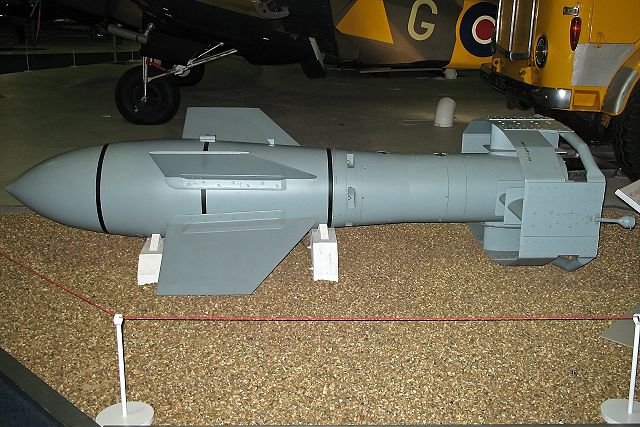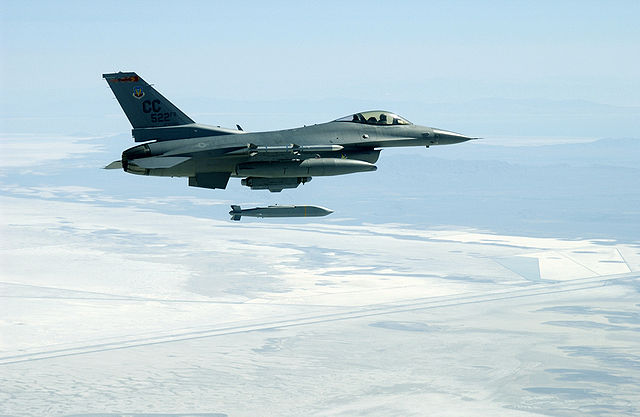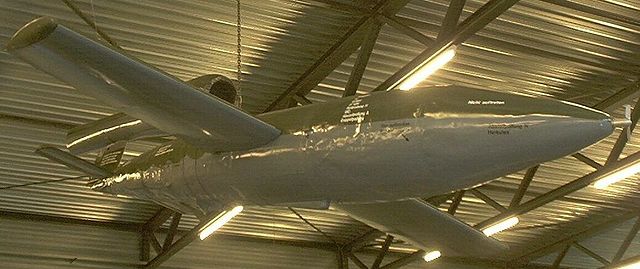A glide bomb or stand-off bomb is a standoff weapon with flight control surfaces to give it a flatter, gliding flight path than that of a conventional bomb without such surfaces. This allows it to be released at a distance from the target rather than right over it, allowing a successful attack without exposing the launching aircraft to anti-aircraft defenses near the target. Glide bombs can accurately deliver warheads in a manner comparable to cruise missiles at a fraction of the cost—sometimes by installing flight control kits on simple unguided bombs—and they are very difficult for surface-to-air missiles to intercept due to their tiny radar signatures and short flight times. The only effective countermeasure in most cases is to shoot down enemy aircraft before they approach within launching range, making glide bombs very potent weapons where wartime exigencies prevent this.
A German 'Fritz X' glide bomb
An F-16C releases an AGM-154 JSOW. The AGM-154 JSOW has a range of 12 nmi (22 km) for a low altitude launch, or 70 nmi (130 km) for a high altitude launch.
HOPE/HOSBO of the Luftwaffe
A cruise missile is an unmanned self-propelled guided vehicle that sustains flight through aerodynamic lift for most of its flight path and whose primary mission is to place an ordnance or special payload on a target. Cruise missiles are designed to deliver a large warhead over long distances with high precision. Modern cruise missiles are capable of traveling at high subsonic, supersonic, or hypersonic speeds, are self-navigating, and are able to fly on a non-ballistic, extremely low-altitude trajectory.
A BGM-109 Tomahawk flying in November 2002
A Fieseler Fi-103, the German V-1 flying bomb
BrahMos shown at IMDS 2007.
India's Nirbhay missiles mounted on a truck-based launcher







